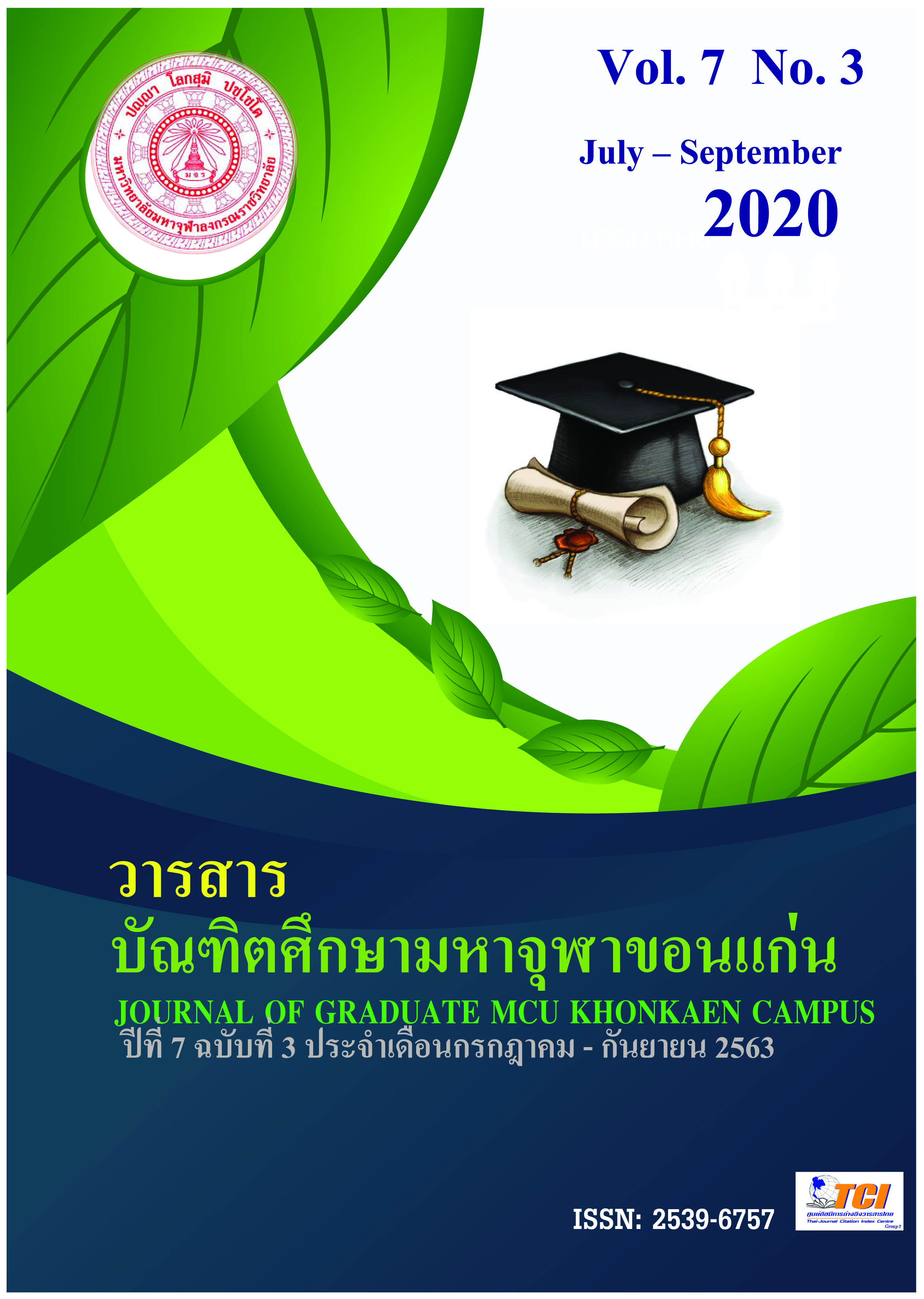THE DEVELOPMENT OF FUTURE PROBLEM SOLVING THINKING ABILITY FOR GRADE 5 STUDENTS USING COUNSELING ACTIVITIES WITH FUTURE PROBLEM SOLVING INSTRUCTIONAL MODEL
Main Article Content
Abstract
ABSTACT
The objectives of this research were to: 1) develop future problem-solving ability for grade 11 students with an application of future problem-solving teaching guidance activities. It is determined that a student earns future problem-solving average score not less than 80 percent and pass at least 80% of criteria; and 2) study satisfaction towards learning management in future problem-solving teaching guidance activities. The target group consists of 20 cases of 5/1 class students studying 2nd semester, 2019 academic year, Chorakhe Witthayayon School. The action research comprises of 3 action cycles. The research tools are divided into three types: 1) tools used for action: six guidance activity learning management plans; 2) tools used for reflecting action results: teaching record form, learning behavior observation form, student interview form, 6-item subjective test for end cycle future problem solving ability; and 3) research result evaluation tools: 6-item subjective test for future problem solving ability and 20-item satisfaction questionnaire for guidance activities with application of future problem-solving instruction. The mean (), standard deviation (S.D.) and percentage (%) are applied for quantitative data analysis and content analysis is employed for qualitative data analysis.
The findings reveal that: 1) students earn mean () of future problem-solving ability scores equivalent to 21.50, accounting for 89.58 percent of full score and the number of students pass the criteria is 17, accounting for 85.00% of entire students and the number is higher than the criteria; 2) the satisfaction level among students towards learning management with future problem-solving instruction is the highest ( = 4.51, S.D. = 0.59). Considering each item, the item with the highest mean is: encourage students to practice indicating the most critical problem ( = 4.80, S.D. = 0.41), followed by encourage students to find problem solutions ( = 4.75, S.D. = 0.44).
Keyword: Counseling Activity; Future Problem Solving Instructional Model; Future Problem
Solving Thinking Ability
Article Details
References
Apinapus Chitrakorn. (2015). A Development of Collaborative Blended Learning Using
Problem Solving Techniques to Promote Creativity in Graphic Design on Instructional
Media of Pre-service Teacher Students. Silpakorn University.
Crabbe, Anne B. (1989). The Coach’s Guide to the Future Problem Solving Program.
St. Andrews college Laurinburg, North Carolina.
Chorakhe Witthayayon School. (2019). Student Report. Student Affairs Department of
Chorakhe Witthayayon School. (in thai)
Hongsunee Uarattanaraksa. (1993). The Development of Creative Thinking of Prathom
Suksa Five Students by Using Torrance’s Future Problem Solving Model.
A Thesis Submitted in Partial Fulfilment of the Requirements for the Degree of
Master of Education Graduate School. Chulalongkorn University.
Kemmis, S & McTaggart, R. (1988). The Action Research Planer (3rd ed). Victoria : Deakin
University
Ministry of Education. (2008). Basic Education Core Curriculum. Bangkok of Thailand.
Suwit Munkham. (2012: ). Complete thinking. Bangkok: Parbpim. (in thai)
Saksit Pavaputanon. (2015). The Development the Future Problem Solving Skill Support and
Improvement Program for Grade 8. Mahasarakham University.
Sukunya Srisacorn. (2004). The Development of Problem Solving Ability of Eighth Grade
Students Taught by Future Problem Solving Technique. A Thesis Submitted in Partial
Fulfillment of the Requirements for the Degree Master of Education Department of Curriculum and Instruction Graduate School. Silpakon University.
Sukunya Yutithammanon. (1996). Effect of Using Torrance’s Future Problem Solving
Process on Problem Solving Ability of Prathom Suksa Six Students. A Thesis Submitted in Partial Fulfilment of the Requirements for the Degree of Master of Education Graduate School. Chulalongkorn University.
Wichan Panich. (2013). Learning paths for students in the 21st century. Bangkok: Sodsri-
Saridwongso Foundation. (in thai)
Wichai Wongyai & Marut Patphol. (2013). Basic Education Core Curriculum to the new
paradigm school curriculum. Charansanitwong Printing Co., Ltd. Bangkok.

